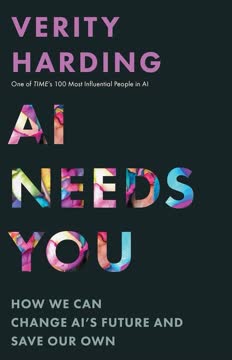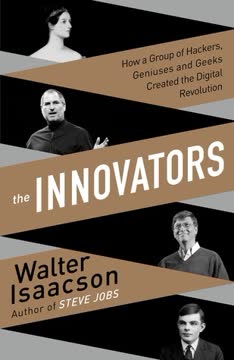പ്രധാന നിർദ്ദേശങ്ങൾ
1. സാങ്കേതിക പുരോഗതി ചരിത്രപരമായി വിജയികളെയും പരാജയങ്ങളെയും സൃഷ്ടിച്ചിട്ടുണ്ട്
സാങ്കേതിക പുരോഗതിയോടുള്ള സമീപനം ആളുകളുടെ വരുമാനത്തെ എങ്ങനെ ബാധിക്കുന്നുവെന്നതിൽ നിന്നാണ് രൂപപ്പെടുന്നത്.
പുരോഗതി അനിവാര്യമല്ല. ചരിത്രം മുഴുവൻ, പുതിയ സാങ്കേതികവിദ്യകൾ പലപ്പോഴും അവയുടെ ജീവിതോപാധികൾക്ക് ഭീഷണി നേരിടുന്നവർക്ക് എതിരായി പ്രതിരോധിക്കപ്പെട്ടിട്ടുണ്ട്. വ്യവസായമുൾപ്പെടാത്ത കാലഘട്ടങ്ങളിൽ, സാമൂഹിക അശാന്തി ഒഴിവാക്കാൻ ഭരണാധികാരികൾ തൊഴിൽ ലാഭകരമായ കണ്ടുപിടുത്തങ്ങൾ തടഞ്ഞു. സാങ്കേതികവിദ്യ സ്വീകരിക്കുന്നത് ബാധിതർ അതിൽ നിന്ന് ലാഭം നേടുമോ എന്നതിൽ ആശ്രയിച്ചിരിക്കുന്നു.
സഹായക സാങ്കേതികവിദ്യകളും പകരംവെക്കുന്ന സാങ്കേതികവിദ്യകളും. സാമ്പത്തിക വിദഗ്ധർ വ്യത്യസ്തമായി തിരിച്ചറിയുന്നു:
- സഹായക സാങ്കേതികവിദ്യകൾ: പുതിയ ജോലികൾ സൃഷ്ടിക്കുകയും ഉൽപാദനക്ഷമത വർദ്ധിപ്പിക്കുകയും ചെയ്യുന്നു (ഉദാ: ടെലിസ്കോപ്പ്)
- പകരംവെക്കുന്ന സാങ്കേതികവിദ്യകൾ: മനുഷ്യ തൊഴിൽ പകരുന്നു (ഉദാ: പവർ ലൂം)
പകരംവെക്കുന്ന സാങ്കേതികവിദ്യകൾക്ക് കൂടുതൽ എതിർപ്പ് നേരിടേണ്ടിവരുന്നു, കാരണം അവ താൽക്കാലികമായി തൊഴിൽ ആവശ്യകതയും ശമ്പളവും കുറയ്ക്കാം. എന്നാൽ, മാറ്റം നന്നായി നിയന്ത്രിച്ചാൽ, ദീർഘകാല ഉൽപാദനക്ഷമത വർദ്ധിപ്പിച്ച് സമൂഹത്തിന് വ്യാപകമായ ലാഭം നൽകാൻ കഴിയും.
2. വ്യവസായ വിപ്ലവം ആദ്യം പല തൊഴിലാളികളുടെ അവസ്ഥ മോശമാക്കി
വ്യവസായ വിപ്ലവത്തിന്റെ ലാഭം പ്രധാനമായും വ്യവസായികളിലേക്കായിരുന്നു, അവരുടെ ലാഭനിരക്ക് ഇരട്ടിയായി.
എംഗൽസിന്റെ ഇടവേള. 1760-1840 കാലഘട്ടത്തിലെ ആദ്യ വ്യവസായ വിപ്ലവം, വേഗത്തിലുള്ള സാമ്പത്തിക വളർച്ചയ്ക്കിടയിലും, പല തൊഴിലാളികളുടെ ജീവിത നിലവാരം നിലച്ചോ കുറയുകയോ ചെയ്തു. ഫ്രിഡ്രിച്ച് എംഗൽസ് ഇതിനെ "എംഗൽസിന്റെ ഇടവേള" എന്ന് വിശേഷിപ്പിച്ചു. പ്രധാന ഫലങ്ങൾ:
- യന്ത്രങ്ങളും അനുപരിചിത ഫാക്ടറി തൊഴിലാളികളും പരിചയസമ്പന്ന കയ്യൊഴുക്കുകാരെ മാറ്റിവെച്ചു
- ദുർബല സാഹചര്യങ്ങളിൽ ദീർഘകാല ജോലി
- ഫാക്ടറികളിൽ ബാലശ്രമം
- ലാഭം ഉയർന്നപ്പോൾ ശമ്പളം നിലച്ചതിനാൽ വർദ്ധിച്ച അസമത്വം
തൊഴിലാളികളുടെ പ്രതിരോധം. ലഡൈറ്റുകൾ പോലുള്ള പ്രക്ഷോഭങ്ങൾ യന്ത്രങ്ങൾ നശിപ്പിച്ച് യന്ത്രവൽക്കരണത്തിന് ശക്തമായി എതിർന്നു. എന്നാൽ ബ്രിട്ടീഷ് സർക്കാർ വ്യവസായ പുരോഗതിയെ സംരക്ഷിക്കാൻ ഈ പ്രക്ഷോഭങ്ങൾ ശക്തമായി അടിച്ചമർത്തി.
3. 20-ാം നൂറ്റാണ്ടിൽ സാങ്കേതികവിദ്യ തൊഴിലാളികൾക്ക് വ്യാപകമായി ലാഭം നൽകി
1970-ഓടെ, മധ്യ വരുമാന ജോലികൾ യന്ത്രങ്ങൾ ഏറ്റെടുത്ത് പലരെയും താഴ്ന്ന ശമ്പള ജോലികളിലേക്കോ തൊഴിൽമേഖലയിൽ നിന്ന് പുറത്തേക്കോ തള്ളിയിരുന്നു.
സഹായക സാങ്കേതികവിദ്യകൾ പുതിയ ജോലികൾ സൃഷ്ടിച്ചു. രണ്ടാം വ്യവസായ വിപ്ലവം (1870-1914) വൈദ്യുതി, ഇന്റേണൽ കംബഷൻ എഞ്ചിൻ പോലുള്ള സാങ്കേതികവിദ്യകൾ കൊണ്ടുവന്നു, പുതിയ ജോലികളും വ്യവസായങ്ങളും സൃഷ്ടിച്ചു. 20-ാം നൂറ്റാണ്ടിൽ സാങ്കേതികവിദ്യ മനുഷ്യ കഴിവുകൾ പകരംവെക്കാതെ കൂട്ടിച്ചേർത്തു.
പ്രധാന വികസനങ്ങൾ:
- ഹൈസ്കൂൾ പാസായവർക്ക് ലഭ്യമായ നിർമ്മാണവും ക്ലെറിക്കൽ ജോലികളും ഉയർന്നു
- ഉൽപാദനക്ഷമത വർദ്ധിച്ചതോടെ എല്ലാ കഴിവ് തലങ്ങളിലും ശമ്പളവും ഉയർന്നു
- മധ്യവർഗ്ഗം വികസിച്ചു, അസമത്വം കുറച്ചു
- സാങ്കേതികവിദ്യക്ക് തൊഴിലാളികളുടെ എതിർപ്പ് കുറവായി, ലാഭം വ്യാപകമായി പങ്കുവെച്ചു
ഈ കാലഘട്ടം "വലിയ തുല്യപ്പെടുത്തൽ" ആയി അറിയപ്പെടുന്നു, സാമ്പത്തിക ലാഭം സമതുലിതമായി വിതരണം ചെയ്ത് സ്ഥിരതയുള്ള ജനാധിപത്യത്തെയും സാമൂഹിക ഐക്യത്തെയും പിന്തുണച്ചു.
4. കമ്പ്യൂട്ടറുകളും എഐയും ഇപ്പോൾ മധ്യനൈപുണ്യ ജോലികൾ മാറ്റിവെക്കുന്നു
ഓട്ടോമേഷൻ കാലം 20-ാം നൂറ്റാണ്ടിലെ യന്ത്രവൽക്കരണത്തിന്റെ തുടർച്ചയല്ല. മറിച്ച്, അതിന്റെ പൂർണ്ണമായ മറിവാണ്.
ജോലി ധ്രുവീകരണം. 1980-കളിൽ നിന്ന് കമ്പ്യൂട്ടർ സാങ്കേതികവിദ്യ മധ്യനൈപുണ്യ റൂട്ടീൻ ജോലികൾ പകരുമ്പോൾ ഉയർന്ന നൈപുണ്യ ജോലികൾ സൃഷ്ടിച്ചു. ഇതിന്റെ ഫലമായി:
- കോളേജ് ബിരുദമില്ലാത്ത തൊഴിലാളികളുടെ തൊഴിൽ അവസരവും ശമ്പളവും കുറയുന്നു
- ഉയർന്ന നൈപുണ്യവും ശമ്പളവും ഉള്ള ജോലികളും താഴ്ന്ന നൈപുണ്യവും ശമ്പളവും ഉള്ള ജോലികളും വളരുന്നു
- മധ്യവർഗ്ഗം "തൊടുപുഴ" ആയി മാറുന്നു
നൈപുണ്യഭേദം സാങ്കേതിക മാറ്റം. പുതിയ സാങ്കേതികവിദ്യകൾ ഉയർന്ന വിദ്യാഭ്യാസമുള്ള തൊഴിലാളികളെ മുൻഗണന നൽകുന്നു, കോളേജ് ബിരുദധാരികളുമായുള്ള വ്യത്യാസം വർദ്ധിപ്പിക്കുന്നു. ഇത് അസമത്വവും സാമൂഹിക പാളിപ്പാടുകളും വർദ്ധിപ്പിക്കുന്നു.
5. പുതിയ ജോലികൾ നൈപുണ്യമുള്ള നഗരങ്ങളിൽ കേന്ദ്രീകരിക്കുമ്പോൾ ഭൂമിശാസ്ത്ര അസമത്വം വർദ്ധിക്കുന്നു
ഡിജിറ്റൽ വ്യവസായങ്ങൾ നൈപുണ്യമുള്ള ജനസംഖ്യയുള്ള നഗരങ്ങളിൽ കൂടുതലായി കേന്ദ്രീകരിച്ചിട്ടുണ്ട്.
വലിയ വ്യത്യാസം. 20-ാം നൂറ്റാണ്ടിൽ യുഎസ് പ്രദേശങ്ങൾ തമ്മിലുള്ള സാമ്പത്തിക ഏകീകരണം ഉണ്ടായിരുന്നു, എന്നാൽ 1980-കളിൽ നിന്ന് ഇത് മറിഞ്ഞു:
- പുതിയ ഉയർന്ന നൈപുണ്യ ജോലികൾ വിദ്യാഭ്യാസമുള്ള തൊഴിലാളികളുള്ള നഗരങ്ങളിൽ കേന്ദ്രീകരിക്കുന്നു
- പഴയ നിർമ്മാണ കേന്ദ്രങ്ങൾ കുറഞ്ഞു, റൂട്ടീൻ ജോലികൾ ഇല്ലാതായി
- "സൂപ്പർസ്റ്റാർ നഗരങ്ങൾ" വളരുകയും ബുദ്ധിമുട്ടുന്ന പ്രദേശങ്ങൾ പിന്നിലായി
സ്ഥലം ഇപ്പോഴും പ്രധാനമാണ്. സാങ്കേതികവിദ്യ സ്ഥലം പ്രാധാന്യമില്ലാതാക്കുമെന്ന് പ്രവചിച്ചിട്ടും, ഭൂമിശാസ്ത്രം സാമ്പത്തിക അവസരങ്ങൾക്ക് കൂടുതൽ നിർണായകമായി മാറി. ഇത് വിദ്യാഭ്യാസവും വരുമാനവും അടിസ്ഥാനമാക്കിയുള്ള ഭൂമിശാസ്ത്ര വേർതിരിവ് വർദ്ധിപ്പിക്കുന്നു.
6. മധ്യവർഗ്ഗം ചുരുങ്ങുന്നത് സാമൂഹിക ഐക്യത്തെയും ജനാധിപത്യത്തെയും ഭീഷണിപ്പെടുത്തുന്നു
സ്ഥിരതയുള്ള ജനാധിപത്യത്തിന് വ്യാപകമായ മധ്യവർഗ്ഗം അനിവാര്യമാണ് എന്ന് പല രാഷ്ട്രീയ ശാസ്ത്രജ്ഞരും വ്യക്തമാക്കിയിട്ടുണ്ട്.
രാഷ്ട്രീയ ധ്രുവീകരണം. മധ്യവർഗ്ഗം കുറയുന്നത് രാഷ്ട്രീയ ധ്രുവീകരണത്തോടൊപ്പം സംഭവിച്ചു:
- കോൺഗ്രസിൽ മിതവാദികൾ കുറയുന്നു
- സ്ഥാപനങ്ങളിൽ വിശ്വാസം കുറയുന്നു
- ജനകീയ പ്രസ്ഥാനങ്ങളുടെ ഉയർച്ച
തൊഴിലാളികളുടെ സ്വാധീനം കുറയുന്നു. യൂണിയനുകളുടെ കുറവും കോർപ്പറേറ്റ് ലോബിയിംഗ് വർദ്ധനവും തൊഴിലാളികളുടെ താൽപര്യങ്ങൾക്ക് നയങ്ങൾ കുറവായി പ്രതികരിക്കുന്നു. പൊതുവായ പിന്തുണയുണ്ടായിട്ടും കുറഞ്ഞ ശമ്പള പരിധി ഉയർത്താൻ പരാജയപ്പെടുന്നത് ഇതിന്റെ ഉദാഹരണമാണ്.
സമ്പന്നരും ബുദ്ധിമുട്ടുന്നവരും വേർപിരിഞ്ഞ് സഹാനുഭൂതിയും പങ്കുവെക്കുന്ന അനുഭവങ്ങളും കുറയുന്നത് ജനാധിപത്യ സ്ഥിരതയ്ക്ക് ഭീഷണി സൃഷ്ടിക്കുന്നു.
7. നയ തീരുമാനങ്ങൾ എഐ സമൂഹത്തിന് വ്യാപകമായി ലാഭം നൽകുമോ അസമത്വം വർദ്ധിപ്പിക്കുമോ എന്ന് നിർണ്ണയിക്കും
എഐയുടെ ഭാവി നമുക്ക് എങ്ങനെ താൽക്കാലികമായി നിയന്ത്രിക്കാമെന്നതിൽ ആശ്രയിച്ചിരിക്കുന്നു.
എഐയുടെ സാധ്യത. കൃത്രിമ ബുദ്ധിമുട്ട് ഉൽപാദനക്ഷമത വൻതോതിൽ വർദ്ധിപ്പിച്ച് പുതിയ ജോലികൾ സൃഷ്ടിക്കാനും സാധിക്കും, മുൻപ് ഉണ്ടായ പൊതുവായ സാങ്കേതികവിദ്യകളെപ്പോലെ സമൂഹത്തിന് വ്യാപകമായ ലാഭം നൽകാൻ കഴിയും.
സവാൽ. എഐ ജോലി ധ്രുവീകരണവും അസമത്വവും കൂടുതൽ വഷളാക്കാൻ സാധ്യതയുണ്ട്, പ്രത്യേകിച്ച് ലാഭം ചെറിയ നൈപുണ്യമുള്ള തൊഴിലാളികളുടെയും നിക്ഷേപകരുടെയും കൈവശം മാത്രമാകുമ്പോൾ.
പ്രധാന നയ പരിഗണനകൾ:
- തൊഴിലാളികളെ സഹായിക്കുന്ന വിദ്യാഭ്യാസവും പുനരധിവാസവും
- ഭൂമിശാസ്ത്ര വ്യത്യാസം പരിഹരിക്കൽ
- തൊഴിലാളികളുടെ ചർച്ചാ ശക്തി ഉറപ്പാക്കൽ
- പുതിയ പുനർവിതരണ മാർഗങ്ങൾ (ഉദാ: സർവത്ര അടിസ്ഥാന വരുമാനം)
മാറ്റം മുൻകൂട്ടി നന്നായി നിയന്ത്രിക്കുന്നത് എഐയുടെ സാധ്യതകൾ പ്രയോജനപ്പെടുത്താനും സാമൂഹിക അശാന്തി കുറയ്ക്കാനും അനിവാര്യമാണ്. മുൻ സാങ്കേതിക വിപ്ലവങ്ങളുടെ പാഠങ്ങൾ ഉൾക്കൊള്ളുന്ന സമഗ്ര വളർച്ചയുടെ പ്രാധാന്യം ഇതിലൂടെ തെളിയുന്നു.
അവസാനമായി പുതുക്കിയത്:
FAQ
What's The Technology Trap about?
- Exploration of Automation's Impact: The Technology Trap by Carl Benedikt Frey examines the effects of automation on labor, capital, and society, drawing parallels between the Industrial Revolution and the current age of automation.
- Historical Context: The book provides a historical perspective on technological change, discussing societal reactions to labor-replacing technologies throughout history.
- Economic Theories: Frey explores economic theories related to technological progress, distinguishing between enabling and replacing technologies and their implications for labor markets.
Why should I read The Technology Trap?
- Understanding Current Issues: The book helps readers understand ongoing debates about automation and its workforce implications, providing insights into resistance to technological change.
- Historical Lessons: Frey offers lessons from history to guide policymakers and society in managing the transition to an automated future.
- Comprehensive Analysis: Combining historical accounts, economic theory, and contemporary examples, the book provides a well-rounded analysis of technology's societal impact.
What are the key takeaways of The Technology Trap?
- Technology's Dual Nature: The book emphasizes that technology can be both enabling and replacing, with significant implications for labor markets.
- Historical Resistance: Frey illustrates that resistance to labor-replacing technologies has been a common theme throughout history, often leading to social unrest.
- Political Power Dynamics: The book discusses how political power dynamics influence the acceptance of technological change, often favoring innovation over worker protection.
What are the best quotes from The Technology Trap and what do they mean?
- Historical Perspective: “The longer you can look back, the farther you can look forward.” This quote underscores the importance of historical perspective in understanding current technological challenges.
- Link to Social Unrest: “The sole cause of great riots was the new machines employed in cotton manufacture.” This highlights the direct link between technological change and social unrest.
- Immediate Impacts: “In the long run, we are all dead.” Frey uses this quote to emphasize the urgency of addressing the short-term consequences of automation on workers.
How does Carl Benedikt Frey define enabling and replacing technologies in The Technology Trap?
- Enabling Technologies: These enhance productivity without displacing workers, such as tools that assist workers in their tasks.
- Replacing Technologies: These take over tasks previously performed by humans, leading to job losses and often facing resistance from workers.
- Economic Implications: The distinction between these technologies has significant economic implications, particularly regarding income distribution and labor market dynamics.
What historical examples does Frey use to illustrate the technology trap?
- The Luddites: Frey discusses the Luddites, who protested against mechanization during the Industrial Revolution, exemplifying fear and resistance to labor-replacing technologies.
- Preindustrial Societies: The book examines how preindustrial societies resisted technologies that threatened their livelihoods, providing insight into contemporary fears about automation.
- Political Responses: Frey highlights how political authorities historically sided with innovators over workers, often suppressing resistance to technological change.
How does The Technology Trap relate to current debates about automation?
- Contemporary Relevance: Frey connects historical patterns of resistance to automation with current anxieties about job displacement due to AI and robotics.
- Policy Implications: The book suggests that policymakers need to consider the short-term impacts of automation on workers, rather than assuming long-term benefits will automatically follow.
- Public Sentiment: Frey notes that public sentiment towards automation is increasingly negative, reflecting a historical pattern of resistance that can lead to social unrest if not addressed.
What role does political power play in the acceptance of technology according to Frey?
- Influence of Elites: Frey argues that political power dynamics significantly influence the acceptance of new technologies, with those who stand to gain often having more political clout.
- Historical Context: The book provides historical examples of how political authorities have sided with innovators over workers, often suppressing resistance to technological change.
- Future Implications: Understanding the relationship between political power and technological acceptance is crucial for navigating future technological transitions.
How does Frey suggest we can learn from history in relation to technology?
- Historical Patterns: Frey emphasizes that examining historical responses to technological change can inform current and future actions.
- Policy Development: The book advocates for developing policies that address the short-term impacts of automation on workers, drawing lessons from past experiences.
- Balancing Interests: Frey suggests that successful navigation of technological change requires balancing the interests of innovators and workers.
What are the potential future implications of automation discussed in The Technology Trap?
- Job Displacement: Frey warns that the current wave of automation, particularly through AI, could lead to significant job displacement similar to past technological revolutions.
- Political Backlash: The book discusses the potential for a political backlash against automation if workers feel left behind.
- Need for Adaptation: Frey emphasizes the importance of adapting to technological changes by investing in education and retraining programs for displaced workers.
How does The Technology Trap address the issue of inequality?
- Wage Disparities: Frey discusses how technological advancements have led to widening wage gaps, particularly between skilled and unskilled workers.
- Impact on the Middle Class: The book argues that the decline of middle-income jobs has eroded the economic stability of the middle class.
- Policy Recommendations: Frey suggests that understanding the relationship between technology and inequality is essential for developing policies that promote equitable growth.
How does The Technology Trap suggest we can mitigate the effects of automation?
- Policy Interventions: Frey recommends implementing policies that support retraining and upskilling for displaced workers.
- Universal Basic Income: The book discusses the potential of universal basic income as a means to provide financial security for those affected by job loss due to automation.
- Strengthening Labor Rights: Frey argues for the importance of labor unions and collective bargaining to protect workers' rights in the face of technological change.
അവലോകനങ്ങൾ
ടെക്നോളജി ട്രാപ്പ് എന്ന പുസ്തകം, സാങ്കേതിക പുരോഗതികളുടെ ചരിത്രപരമായ തൊഴിൽ-സമൂഹ üzerindeki സ്വാധീനം പരിശോധിക്കുന്നു. പഴയ വ്യവസായ വിപ്ലവങ്ങളുമായി ഇപ്പോഴത്തെ എഐ കാലഘട്ടത്തെ താരതമ്യം ചെയ്ത്, സാങ്കേതികവിദ്യ ആദ്യം തൊഴിലാളികളെ മാറ്റിവെക്കാമെങ്കിലും, ദീർഘകാല സമൃദ്ധിയിലേക്ക് നയിക്കുന്നുവെന്ന് ഫ്രേ പറഞ്ഞു. തൊഴിൽ മാറ്റുന്നും തൊഴിൽ സഹായിക്കുന്നും ചെയ്യുന്ന സാങ്കേതികവിദ്യകൾ എങ്ങനെ സമ്പദ്വ്യവസ്ഥകളും സാമൂഹിക ഘടനകളും രൂപപ്പെടുത്തിയിട്ടുള്ളതാണെന്ന് ഈ പുസ്തകം വിശദമായി വിശകലനം ചെയ്യുന്നു. സാങ്കേതികവിദ്യ, തൊഴിൽ, അസമത്വം എന്നിവയുടെ സങ്കീർണ്ണ ബന്ധത്തെ ഫ്രേയുടെ സൂക്ഷ്മമായ സമീപനം വായനക്കാർക്ക് ഏറെ പ്രിയങ്കരമാണ്, എന്നാൽ ചിലർ നയപരമായ ശുപാർശകളിൽ കുറവുണ്ടെന്ന് കാണുന്നു. ആകെ, ഓട്ടോമേഷൻ, എഐ എന്നിവയുടെ സാധ്യതയുള്ള ഫലങ്ങൾ മനസ്സിലാക്കാൻ ഇത് ഒരു പ്രധാന വായനയായി കണക്കാക്കപ്പെടുന്നു.
Similar Books














